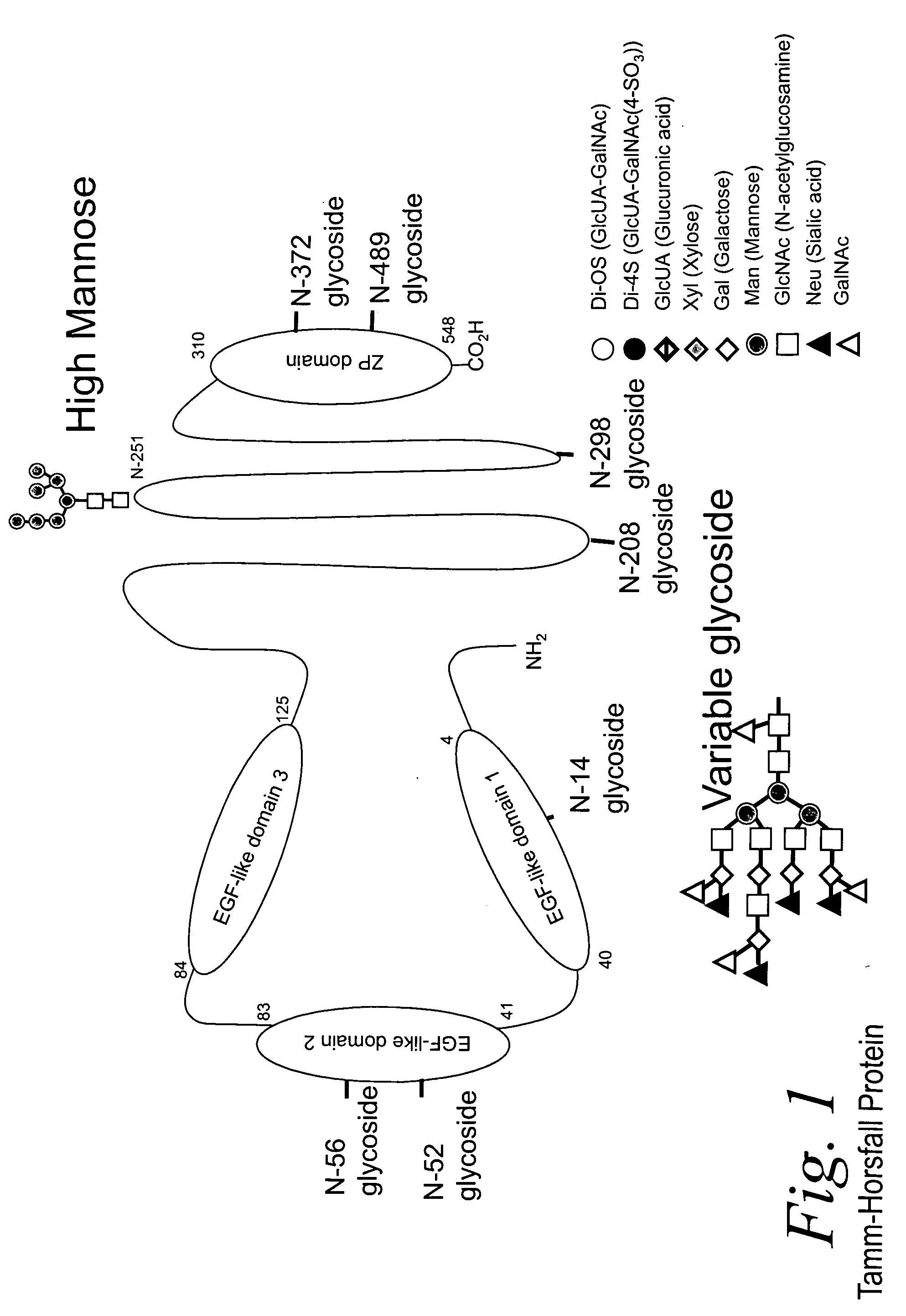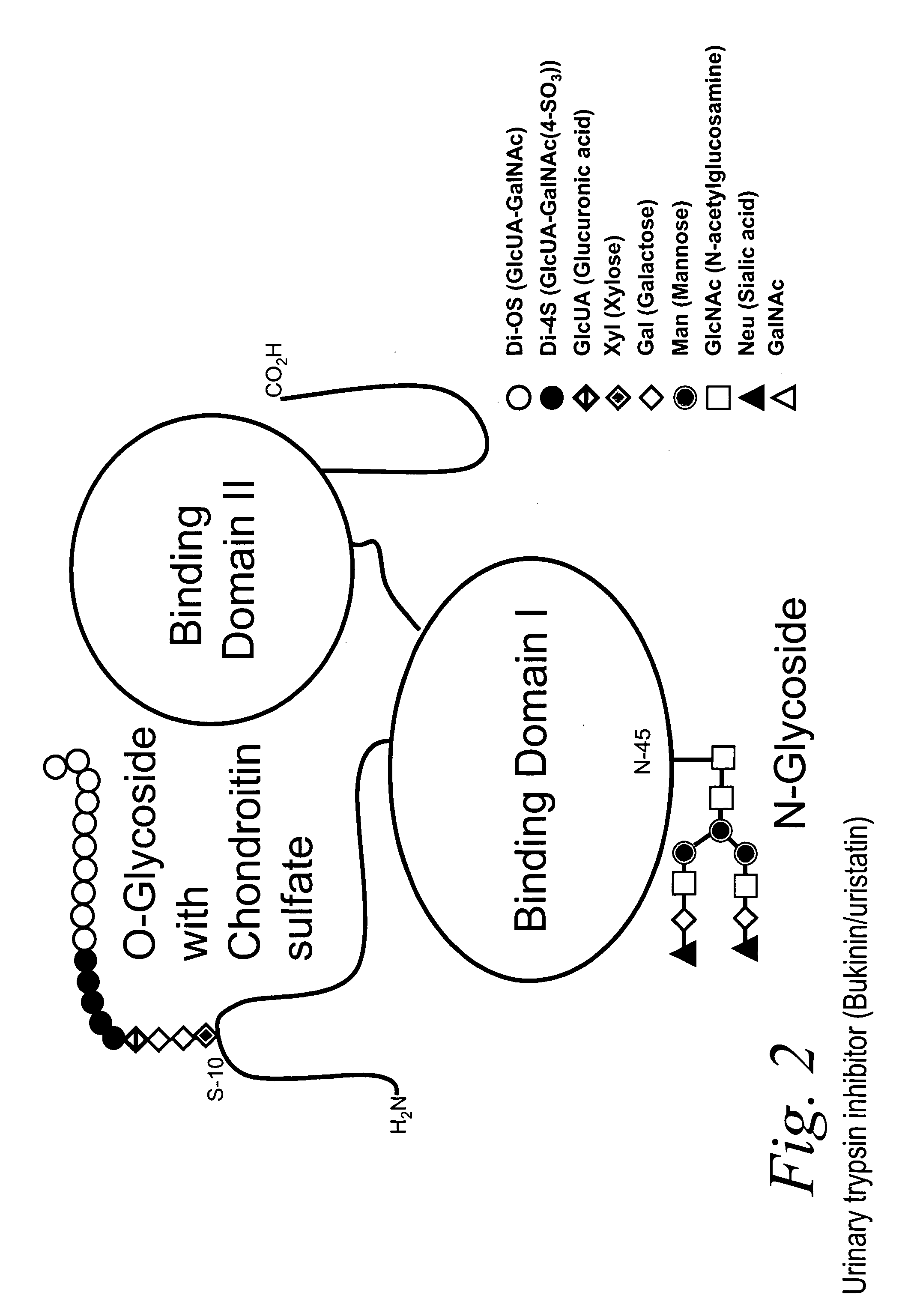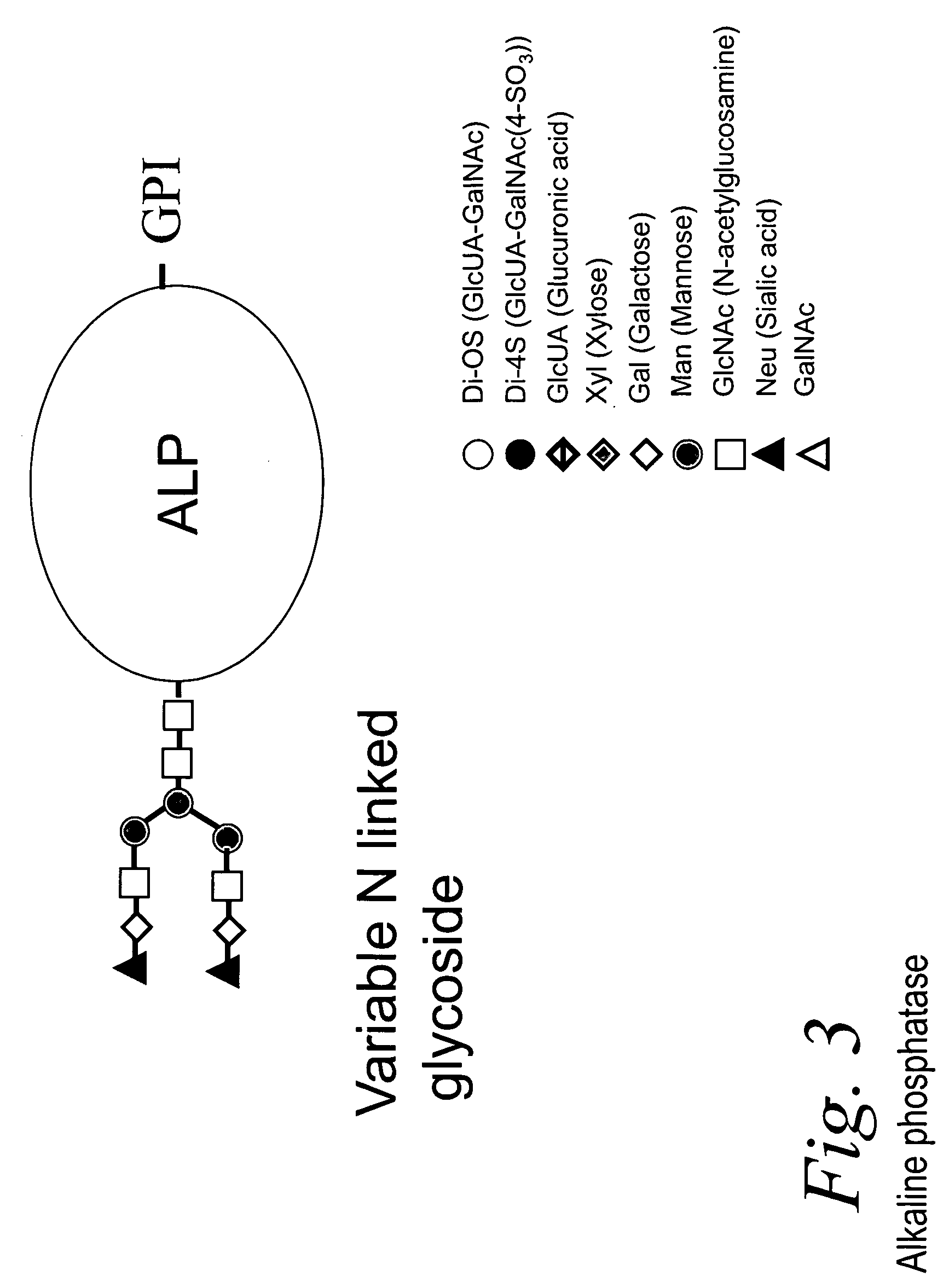Bacterial test method by glycated label binding
a technology of glycated label and bacteria, which is applied in the field of methods for detecting bacteria in fluids, can solve the problems of not being able to teach that cells could be detected by receptors on the cell walls, the use of glycoproteins in assays for measuring bacteria content has not been described, and the method based on liposaccharide antibodies or binding proteins does not provide a measure of the total bacteria present, etc., to achieve the effect of increasing the binding of glycoproteins
- Summary
- Abstract
- Description
- Claims
- Application Information
AI Technical Summary
Benefits of technology
Problems solved by technology
Method used
Image
Examples
example 1
Bacteria Assay by Binding of Intestinal Alkaline Phosphatase
[0075] Bacterial cells (106 to 108 cells / mL) were washed twice with water after centrifugation to separate the cells into a packed pellet from supernatant liquid. The washed cells in pellet form were suspended in 40 μL water and 10 μL of aqueous bovine intestinal alkaline phosphatase (ALP) was added (2 μg or 10,000 Units). The mixture was left at room temperature for 30 minutes and then centrifuged, after which the bacterial pellets were washed with water 4-5 times (50 μL). All the washing supernatants were combined. A blank without cells was diluted in the same way. The final pellets were suspended in 50 μl water and both supernatants and cell suspensions were assayed for detection of ALP binding using 2.5 μl of 0.005 M para-nitrophenol phosphate (PNPP) in Tris or EPPS buffer at pH 7.5. The hydrolysis of the substrate results in yellow (PNPP) or blue-green (BCIP) color that is directly proportional to the amount of ALP b...
example 2
Bacteria Assay by Binding of Non-Glycated Protein to Bacteria
[0080] As a control, an enzymatic protein lacking glycation, beta-galactosidase, was tested for binding to bacteria cell walls. The bacteria from both Staph. and E. coli were tested for beta-galactosidase binding. The beta-Galactosidases (20 mU) were added to saline suspensions of 108 cells / mL of both bacteria and were assayed as well as the pellets (cells re-suspended in water) and supernatants after spinning the bacteria using dimethylacridinium B-D-galactose (DMAG) as the substrate. The assay to determine the amount of enzyme was to add 10 μL of aqueous DMAG (0.5 mM) and 5 μL of aqueous tris buffer (1M) adjusted to pH 7.5 or test bacteria (107 cells) and H2O to 100 μl. Bright yellow color of DMAG changes to light green to dark blue in 5-30 minutes (with beta-galactosidase in 5 min) which is read at 634 nm on a plate reader. Beta-D-galactosidase is a non-glycoprotein and non-membrane protein. In these experiments, beta...
example 3
Bacteria Assay by Binding of Glycated Proteins to Bacteria
[0081] Bacterial cells (1 to 4.5×107 cells / mL) were washed twice with water after centrifugation to separate cells into a packed pellet from the supernatant liquid. The washed cells in pellet form were suspended in 20 ul of N-2-hydroxyethyl piperazine-N′-[3-propane sulfonic acid] EPPS buffer (50 mM at pH 8.0) and 30 μL of water. Glycated protein(s) (2-40 μg) were added. In some cases a glycated protein (2-40 μg) and bovine intestinal alkaline phosphatase (ALP) (2 μg or 10,000 Units) were added and the binding of the glycated protein measured by the reduction of binding of ALP.
[0082] The mixture of glycated protein and bacterial cells was left at 25° C. for 15 minutes. The mixture was then centrifuged at 30,000 rpm for 30 minutes after which the bacterial cells formed a pellet at the bottom of the tube and were washed with water 4-5 times (50 μL). Centrifugation allows separation of glycoprotein bound to the bacteria cells ...
PUM
| Property | Measurement | Unit |
|---|---|---|
| sizes | aaaaa | aaaaa |
| pH | aaaaa | aaaaa |
| pH | aaaaa | aaaaa |
Abstract
Description
Claims
Application Information
 Login to View More
Login to View More - R&D
- Intellectual Property
- Life Sciences
- Materials
- Tech Scout
- Unparalleled Data Quality
- Higher Quality Content
- 60% Fewer Hallucinations
Browse by: Latest US Patents, China's latest patents, Technical Efficacy Thesaurus, Application Domain, Technology Topic, Popular Technical Reports.
© 2025 PatSnap. All rights reserved.Legal|Privacy policy|Modern Slavery Act Transparency Statement|Sitemap|About US| Contact US: help@patsnap.com



